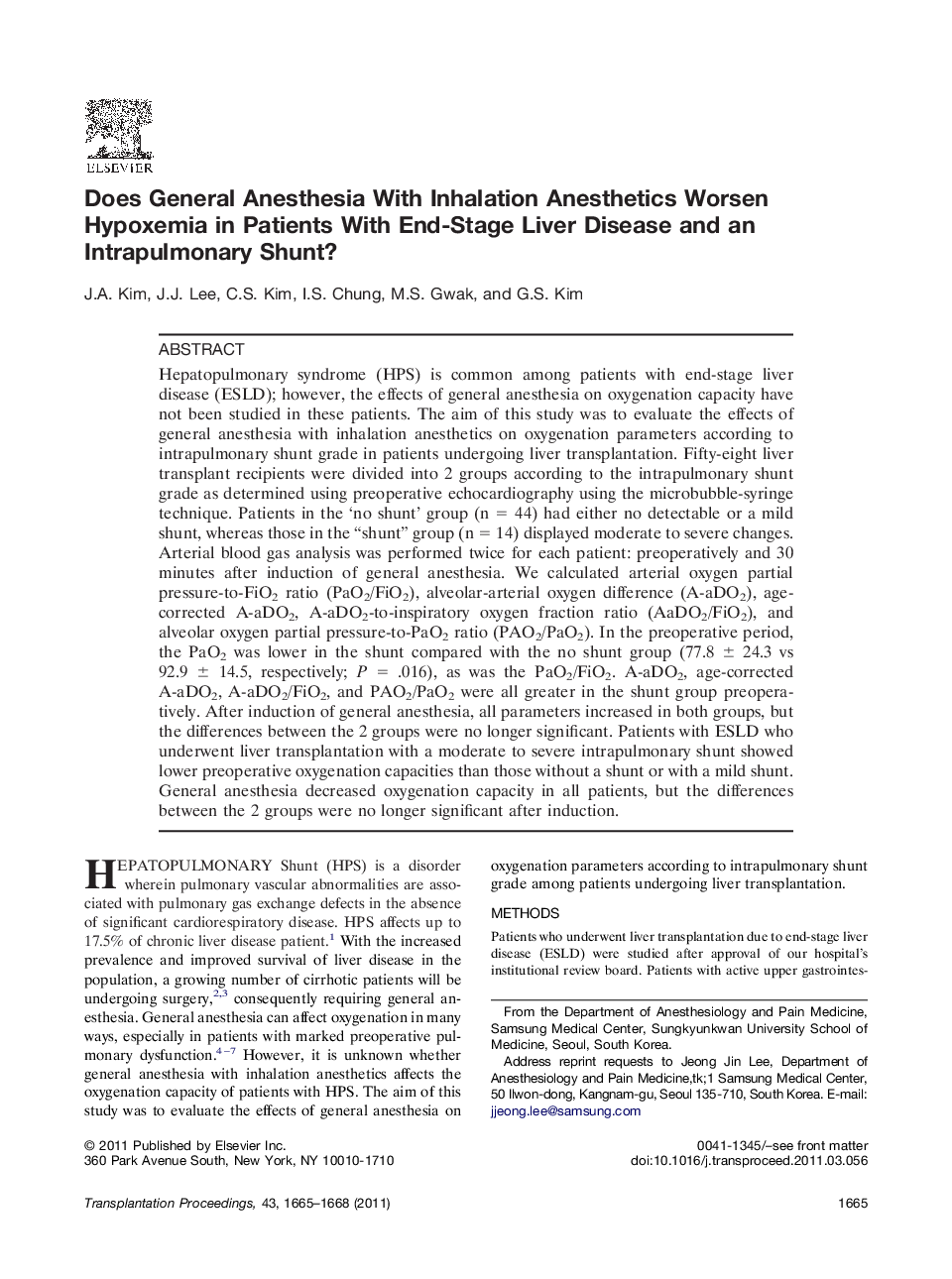| Article ID | Journal | Published Year | Pages | File Type |
|---|---|---|---|---|
| 6249265 | Transplantation Proceedings | 2011 | 4 Pages |
Hepatopulmonary syndrome (HPS) is common among patients with end-stage liver disease (ESLD); however, the effects of general anesthesia on oxygenation capacity have not been studied in these patients. The aim of this study was to evaluate the effects of general anesthesia with inhalation anesthetics on oxygenation parameters according to intrapulmonary shunt grade in patients undergoing liver transplantation. Fifty-eight liver transplant recipients were divided into 2 groups according to the intrapulmonary shunt grade as determined using preoperative echocardiography using the microbubble-syringe technique. Patients in the 'no shunt' group (n = 44) had either no detectable or a mild shunt, whereas those in the “shunt” group (n = 14) displayed moderate to severe changes. Arterial blood gas analysis was performed twice for each patient: preoperatively and 30 minutes after induction of general anesthesia. We calculated arterial oxygen partial pressure-to-FiO2 ratio (PaO2/FiO2), alveolar-arterial oxygen difference (A-aDO2), age-corrected A-aDO2, A-aDO2-to-inspiratory oxygen fraction ratio (AaDO2/FiO2), and alveolar oxygen partial pressure-to-PaO2 ratio (PAO2/PaO2). In the preoperative period, the PaO2 was lower in the shunt compared with the no shunt group (77.8 ± 24.3 vs 92.9 ± 14.5, respectively; P = .016), as was the PaO2/FiO2. A-aDO2, age-corrected A-aDO2, A-aDO2/FiO2, and PAO2/PaO2 were all greater in the shunt group preoperatively. After induction of general anesthesia, all parameters increased in both groups, but the differences between the 2 groups were no longer significant. Patients with ESLD who underwent liver transplantation with a moderate to severe intrapulmonary shunt showed lower preoperative oxygenation capacities than those without a shunt or with a mild shunt. General anesthesia decreased oxygenation capacity in all patients, but the differences between the 2 groups were no longer significant after induction.
